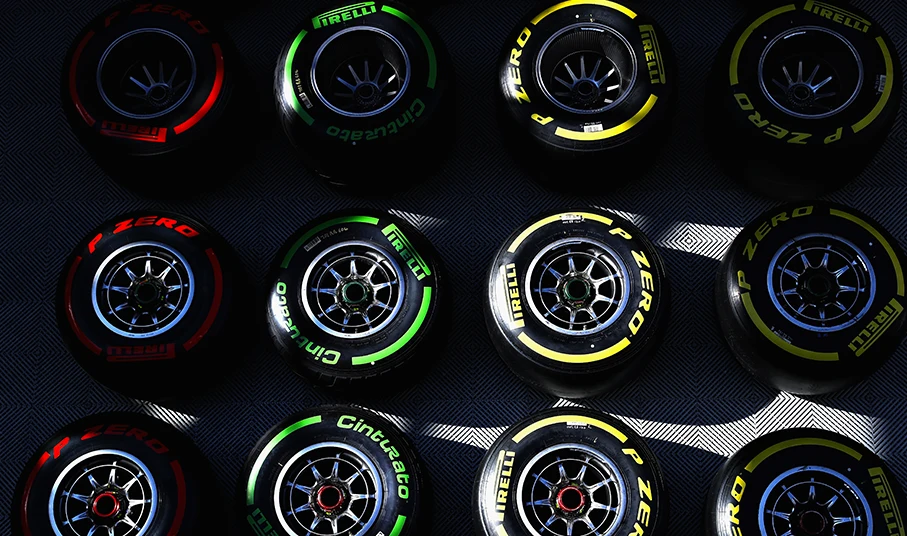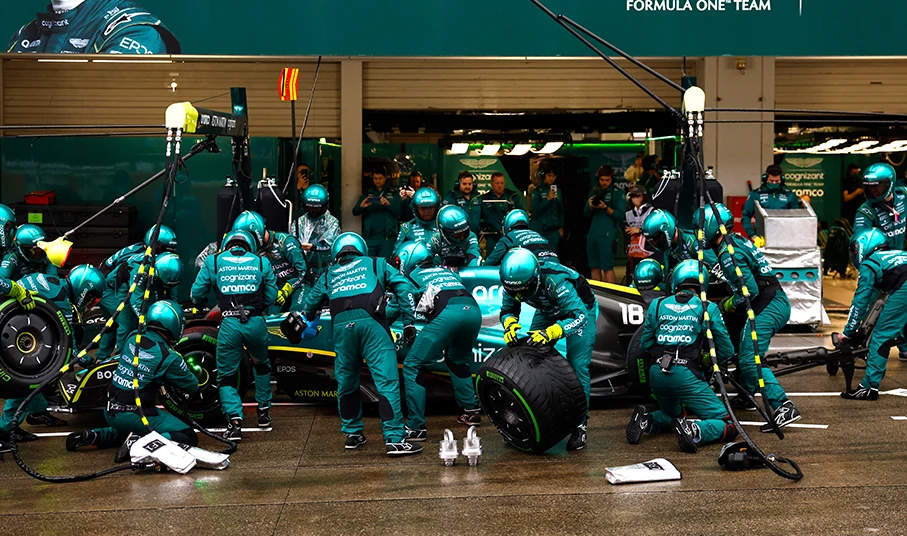F1 Tires - The rubber can make all the difference

Image: Pirelli
For a sport where teams spend millions on incremental improvements, highly sophisticated engines, and aerodynamic efficiency that rivals the aviation industry, it's worth noting that the tires are the only parts of an F1 car to make contact with the racetrack. That small piece of information significantly impacts the results of races.
When you watch a race for the first time, you may not expect to hear so much conversation about tires from the drivers, teams, and commentators. After all, how often do you talk about the rubber on your car's wheels with friends? Not so in F1, where races often are won and lost because of how the tires perform for each racer.
These rubber circles are vitally important for drivers to understand and utilize to their advantage. Similarly, tires are at the crux of all strategy calls, and F1 is infinitely more enjoyable to watch with even a little knowledge about tire differences. This guide will ensure you'll head into the next race with a new appreciation for the racing so you don't get tired of tire talk.

Image: Red Bull Racing
Under previous regulations, fuel load affected the car's weight, playing a pivotal role in how fast a driver might lap. A light car would go faster but needs to be refueled sooner, and vice versa for a fuel-filled vehicle. Then Formula One stopped mid-race refueling before the 2010 season, and today's F1 strategy is all about the tires.
Pirelli is the sole tire supplier to F1, and the Italian company brings slick tires to each race. While a road car has grooves in its tires, slicks have a smooth surface to maximize the grip on a race track. The larger surface area or contact patch of the tire on the ground means a driver will get more adhesion to take corners without spinning out.
Not all slick tires are the same, though, and Pirelli specially constructs different rubber mixtures to give a varying amount of grip and durability. If you think about the various erasers at the end of the pencils you've used in your life, you may recall some are harder and some softer. The same concept applies to F1 tires but for a very different reason.

Image: Alfa Romeo F1
Softer F1 tires give drivers more grip but don't last as long as more durable hard tires that are less grippy. In F1, the difference in the tire rubber gets called compound, but it effectively means Pirelli's chemical mixture for their F1 tires.
At any given race, there are multiple sets of soft, medium, and hard tires for each driver to use. As the names imply, soft tires are the softest of the three, providing the most grip but the shortest life. Hard tires will last the longest but aren't as grippy.
The medium tire offers a mixture of durability and performance. Generally speaking, the more grip a driver has, the faster they go, so the quickest lap times come on soft tires.

Image: Alfa Romeo F1
To help viewers identify what compound of tire a driver is using, Pirelli marks each tire's sidewall with one of three colors. A red sidewall denotes the soft tire, yellow is for the mediums, and white is for the hards. These three colors simplified the previous system when Pirelli had seven colors for all the available dry tires, something a 2019 change refined.
From 2019 onwards, the red-yellow-and-white scheme obscured the slightly more complicated tire choices. In reality, six dry tires are available in 2023 — the C0 being the hardest, the C1 second-hardest, and so on until the softest C5. Pirelli chooses three of these six for each race, and the softest of the three becomes the soft for that event, even though it might be harder than the previous round's hard compound.
All teams receive the same 13 sets of tires per driver from Pirelli ahead of a Grand Prix weekend: eight sets of softs, three mediums, and two sets of hards. Each driver returns two sets after every practice session, leaving them with seven to contest qualifying and the race. Finally, if a driver reaches Q3, they must hand Pirelli back one set of softs while the other 10 drivers can use that set in the race.
When it rains, grooved tires are available, but F1 schedules the races on its international calendar to avoid inclement weather where possible. Of course, even F1 can't govern the skies, and wet races are an unavoidable part of the sport. Fortunately, Pirelli provides two tire compounds for wet weather.
Blue-walled tires are the "wet" tires, sometimes called "extreme wet" or "full wet" to differentiate from the green-walled intermediate tires. Intermediate tires have shallower and fewer grooves than wet tires to give the best performance on a slightly damp or drying track by being a hybrid between slick and wet tires.

Image: Aston Martin F1
The wet tire, however, is best for conditions when the rain is heavy or continually falling and there's plenty of standing water on the track's surface. These tires can disperse over 80 liters of water per second when running at 185 mph, compared to 30 liters for the intermediate.
During a dry Grand Prix, each driver must use at least two different compounds before the race ends, swapping to another compound during a pit stop. This ruling defines the teams' pit stop strategy and is why you might've tuned in halfway through a broadcast to see the driver in first place lose if competitors behind had already changed tires. While one tire set theoretically could last an entire racing season, F1 tasked Pirelli with creating compounds that degrade far sooner than their road-going counterpart.
There's a delicate balance to find the best strategy. Soft tires might be the fastest around a track, but if they don't last long before their performance drops, then it might be slower to use them, thanks to needing more frequent pit stops. In contrast, using the hard tire might mean avoiding too many pit stops at the expense of driving slower than rivals on soft or medium tires.

Image: Mercedes AMG F1
While it may seem counterintuitive, there are examples of running hard tires for longer being a faster strategy than driving on softs or mediums. For example, in the 2022 Australian Grand Prix, Alex Albon ran nearly the entire race on one set of Pirelli's hard rubber before switching to softs on the penultimate lap and jumping from a P20 starting position to finish P10, grabbing a well-earned point. By not getting involved in many on-track battles, Albon managed to leapfrog his rivals through a well-timed pit stop.